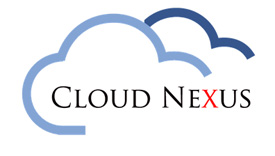In the fast-paced world of digital business, protecting sensitive data is paramount. As businesses increasingly rely on Salesforce as their CRM solution, implementing robust security measures becomes non-negotiable. In this blog post, we’ll delve into Salesforce Security Best Practices, ensuring that your digital fortress remains impregnable in the face of evolving cyber threats.
User Permissions and Access Control:
Start your security journey by meticulously defining user permissions. Tailor access controls to match roles and responsibilities within your organization. Ensure that each user has precisely the level of access they need to perform their job without unnecessary privileges. This foundational step is crucial for preventing unauthorized data access.
Field-level Security:
Fine-tune your security settings by employing field-level security. This feature allows you to control who can see and edit specific fields in your records. By restricting access to sensitive information at the field level, you add an extra layer of protection against unauthorized data exposure.
Encryption for Data at Rest and in Transit:
Protecting data at rest and in transit is a cornerstone of any robust security strategy. Leverage Salesforce’s encryption features to ensure that your data remains confidential. Encrypt sensitive fields, files, and attachments to thwart potential data breaches. Additionally, enforce secure communication channels by enabling HTTPS to encrypt data in transit.
IP Whitelisting:
Heighten your security posture by implementing IP whitelisting. This feature allows you to specify trusted IP addresses that can access your Salesforce instance. By restricting access to predefined IP ranges, you significantly reduce the risk of unauthorized access from external sources.
Multi-factor Authentication (MFA):
Elevate your authentication process with Multi-factor Authentication. Require users to provide multiple forms of identification before granting access. This additional layer of security ensures that even if login credentials are compromised, unauthorized access remains a formidable challenge.
Regular Security Audits:
Proactive security is an ongoing process. Conduct regular security audits to identify vulnerabilities and ensure compliance with best practices. This includes reviewing user permissions, monitoring login history, and assessing recent configuration changes. Regular audits empower you to stay one step ahead of potential security threats.
Secure Development Practices:
Embed security into your development lifecycle. Train your development team on secure coding practices and conduct regular code reviews to identify and rectify security vulnerabilities. A secure development process is fundamental to building a robust and resilient Salesforce environment.
Incident Response Plan:
Prepare for the unexpected with a comprehensive incident response plan. Define clear protocols for detecting, responding to, and mitigating security incidents. Timely and effective responses can minimize the impact of security breaches and expedite recovery.
Stay Informed:
The cybersecurity landscape is ever evolving. Stay informed about the latest security updates and vulnerabilities relevant to Salesforce. Subscribe to security newsletters, participate in forums, and keep a vigilant eye on Salesforce Trust to receive real-time information about the platform’s security status.
Educate Your Users:
Your users are your first line of defense. Educate them on security best practices, the importance of strong passwords, and how to identify and report potential security threats. Creating a security-aware culture within your organization is a powerful defense against social engineering and phishing attacks.
In the ever-changing digital landscape, implementing and maintaining robust security measures in Salesforce is not just a best practice; it’s a business imperative. By following these security best practices, you fortify your digital fortress and build a foundation that instills confidence in your users and stakeholders. As the digital realm continues to evolve, so too will your security practices, ensuring that your Salesforce instance remains a secure haven for your most valuable asset—your data.
DEC
2023

About the Author:
Experienced technical business analyst recognized for implementing cost-effective solutions, leveraging SFDC development with new and legacy data assets, and providing customized solutions for critical business requirements. Engages with executive leadership, sponsors, and end users to develop and deliver end-to-end enterprise solutions that expedite vital business functions and expand revenue growth. Orchestrates sales solutions with maximum economic impact for businesses; specializing in highly matrixed, global Clinical Research Organizations (CROs).